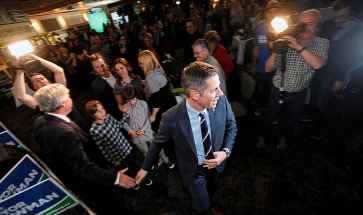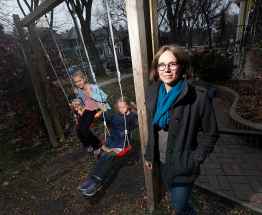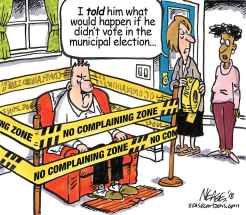Bowman’s strategy to focus on south worked
Read this article for free:
or
Already have an account? Log in here »
To continue reading, please subscribe:
Monthly Digital Subscription
$0 for the first 4 weeks*
- Enjoy unlimited reading on winnipegfreepress.com
- Read the E-Edition, our digital replica newspaper
- Access News Break, our award-winning app
- Play interactive puzzles
*No charge for 4 weeks then price increases to the regular rate of $19.00 plus GST every four weeks. Offer available to new and qualified returning subscribers only. Cancel any time.
Monthly Digital Subscription
$4.75/week*
- Enjoy unlimited reading on winnipegfreepress.com
- Read the E-Edition, our digital replica newspaper
- Access News Break, our award-winning app
- Play interactive puzzles
*Billed as $19 plus GST every four weeks. Cancel any time.
To continue reading, please subscribe:
Add Free Press access to your Brandon Sun subscription for only an additional
$1 for the first 4 weeks*
*Your next subscription payment will increase by $1.00 and you will be charged $16.99 plus GST for four weeks. After four weeks, your payment will increase to $23.99 plus GST every four weeks.
Read unlimited articles for free today:
or
Already have an account? Log in here »
Hey there, time traveller!
This article was published 25/10/2018 (2606 days ago), so information in it may no longer be current.
A poll-by-poll breakdown of the mayoral election results shows that Brian Bowman is well liked in south and southwest Winnipeg, and that’s no fluke.
Kelly McCrae, who managed Bowman’s campaign, said the team was uncertain about the depth of his support north of downtown and concentrated its efforts where it knew Bowman’s support was strongest.
“We did concentrate on areas where we knew we were strongest, to solidify that,” McCrae said.
Jenny Motkaluk registered her campaign May 1, the first day she was eligible, formally launched her campaign shortly after that, and then campaigned strongly throughout the summer.
While she fell short, results show she stole away areas of the city that went Bowman’s way in the 2014 election: large sections of Transcona, North Kildonan, East Kildonan and parts of St. Boniface.
Motkaluk had 18,000 more votes than Judy Wasylycia-Leis — a well-known candidate and experienced politician – did four years ago.
But like Wasylycia-Leis, Motkaluk was unable to win in south Winnipeg.
Click or tap buttons to toggle between results
var pymParent = new pym.Parent(‘election-map-container’, ‘https://wfpdata.s3.amazonaws.com/181018election-map/map.html’, {});
Maps shows winners at the polling subdivision level, according to unofficial results provided by the City of Winnipeg
Can’t see the map? Click or tap here
Aaron Moore, a political science professor at the University of Winnipeg who watched this campaign closely, said how the voting went was not a surprise.
Moore said Motkaluk benefitted from the endorsements of incumbent councillors Jeff Browaty (North Kildonan) and Jason Schreyer (Elmwood-East Kildonan).
“The city seems pretty divided, with the north and east against Bowman, and the remainder for him,” Moore said. “I get a sense that voters in the north of the city and Transcona feel the mayor has been favouring other parts of the city, particularly when it comes to infrastructure spending.”
Motkaluk’s promise to make two projects — replacing the Louise Bridge and extending Chief Peguis Trail to Route 90 – her infrastructure priorities likely resonated with residents in those areas, Moore said.
McCrae said he believes that Motkaluk’s commitments on the Louise Bridge and Chief Peguis Trail helped seal those areas for her.
But McCrae said the Bowman team was fairly confident that it would pick up large parts of central Winnipeg that traditionally favour an NDP/labour-endorsed candidate, which there wasn’t in this campaign, and the results bore that out.
Large areas of the inner city that went to Wasylycia-Leis in 2014 went to Bowman Wednesday night.

Bowman didn’t start actively campaigning until Sept. 13, leaving his team to decide where best to spend their time on, what was for them, a 42-day campaign.
“We didn’t spent a ton of time in the northeast,” McCrae said. “With more time and resources, we probably would have gone there.”
On the Portage and Main plebiscite, Moore said the poll-by-poll breakdown revealed a straightforward explanation for the 65 per cent opposition to the proposal.
"People living in or near downtown were supportive. People in the suburbs were not," Moore said.
Support for reopening the intersection was strongest in many of those neighbourhoods closest to Portage and Main: the Exchange District, West Alexander, South Point Douglas, Norwood Flats, parts of old St. Boniface, Wolseley, River Heights, Wellington Crescent, Riverview, Kingston Crescent, Crescentwood, large parts of River Heights.
Brent Bellamy, a vocal advocate for reopening the intersection to pedestrians, said the results revealed to him that the most influential factor in the debate was traffic, not safety, accessibility or even cost.
"My feeling is it was not about living close to downtown or in downtown because, really, not many people live downtown," Bellamy, creative director and senior design architect with Number Ten Architectural Group, said. "The whole debate was about traffic the whole time."
Bellamy said the breakdown shows that traffic issues are not a concern for people who have a short commute.

"Their lives aren’t centred around really long commutes. They don’t talk about it, they don’t complain about it. But for people who commute 40, 45 minutes, a commute is a major part of their life and they can react more sensitively to even a one-minute delay," Bellamy said. "When you spend 90 minutes of your day in traffic, you react to that."
Bellamy said if there had been no effect on traffic, or if traffic flow could have been improved, it wouldn’t have been an issue and there would not have been a plebiscite.
Coun. Jeff Browaty, who successfully manoeuvred council into holding the plebiscite, said the majority who voted against reopening the intersection are not opposed to improving downtown.
"I don’t think Winnipeggers who voted no, were saying no to a better downtown, they weren’t saying no to a walkable downtown," Browaty said. "They were just saying no to this particular plan that was going to quite dramatically impact traffic movements at key times."
aldo.santin@freepress.mb.ca








